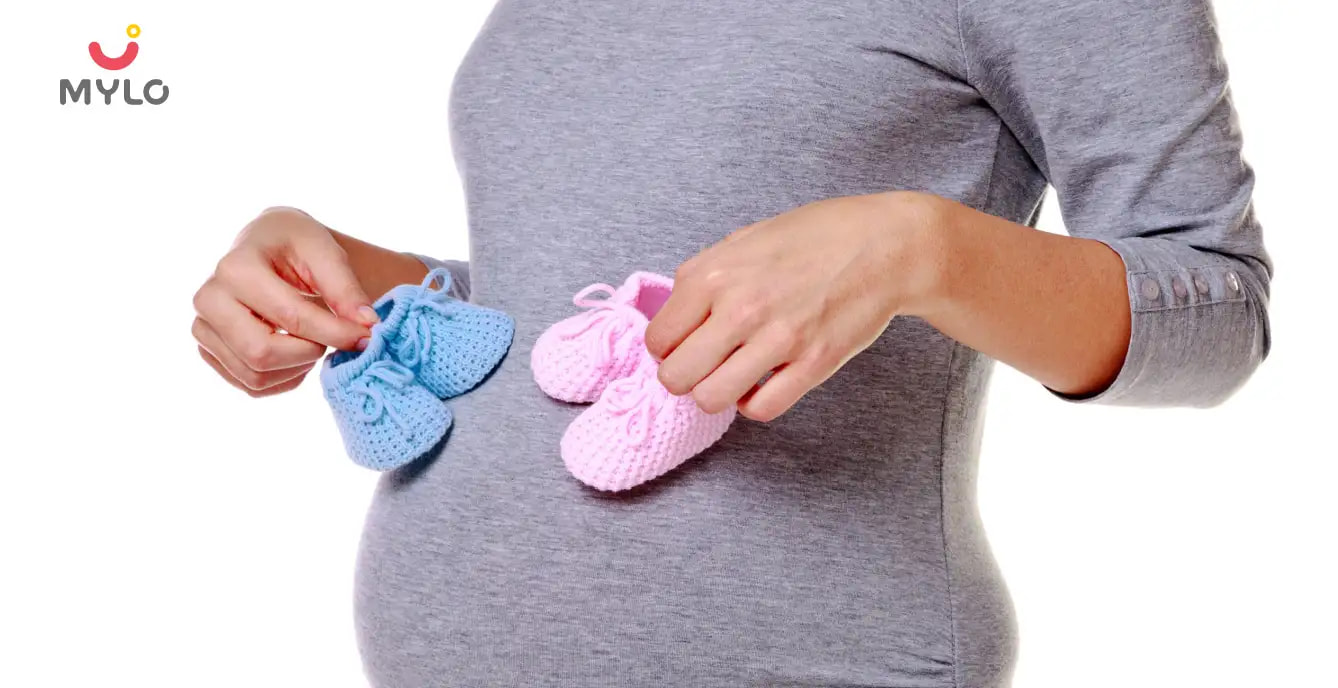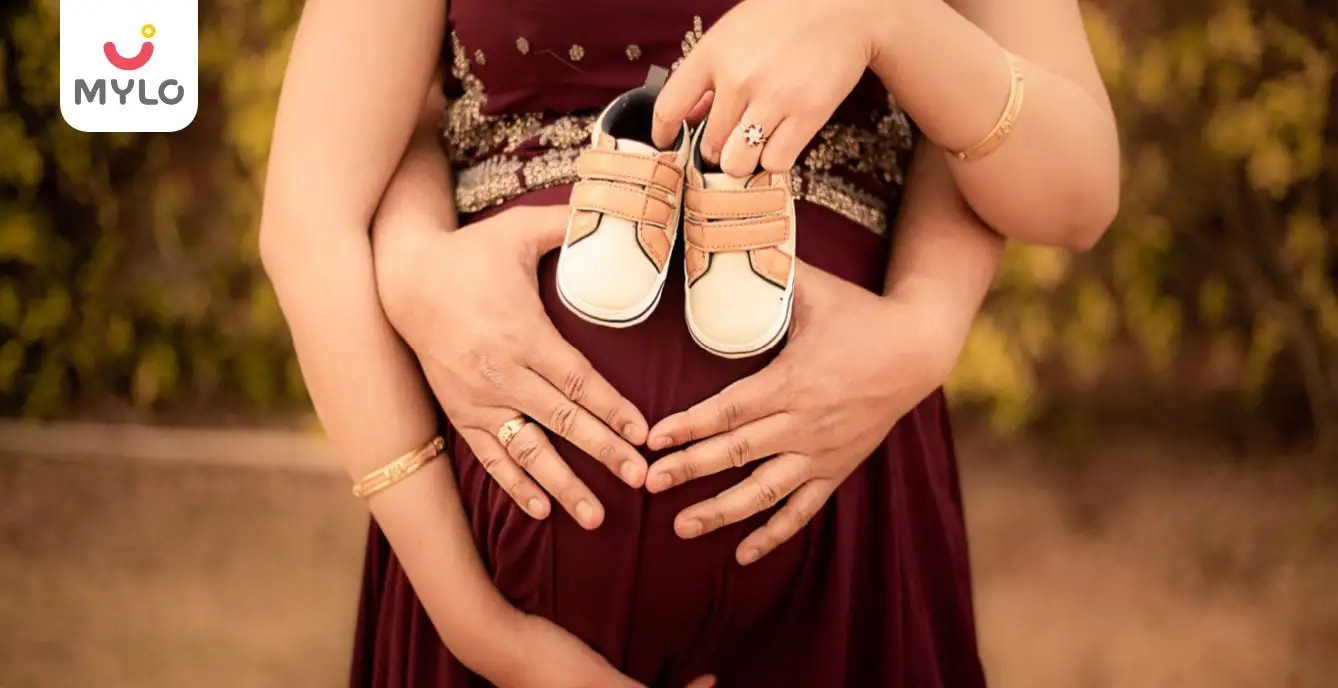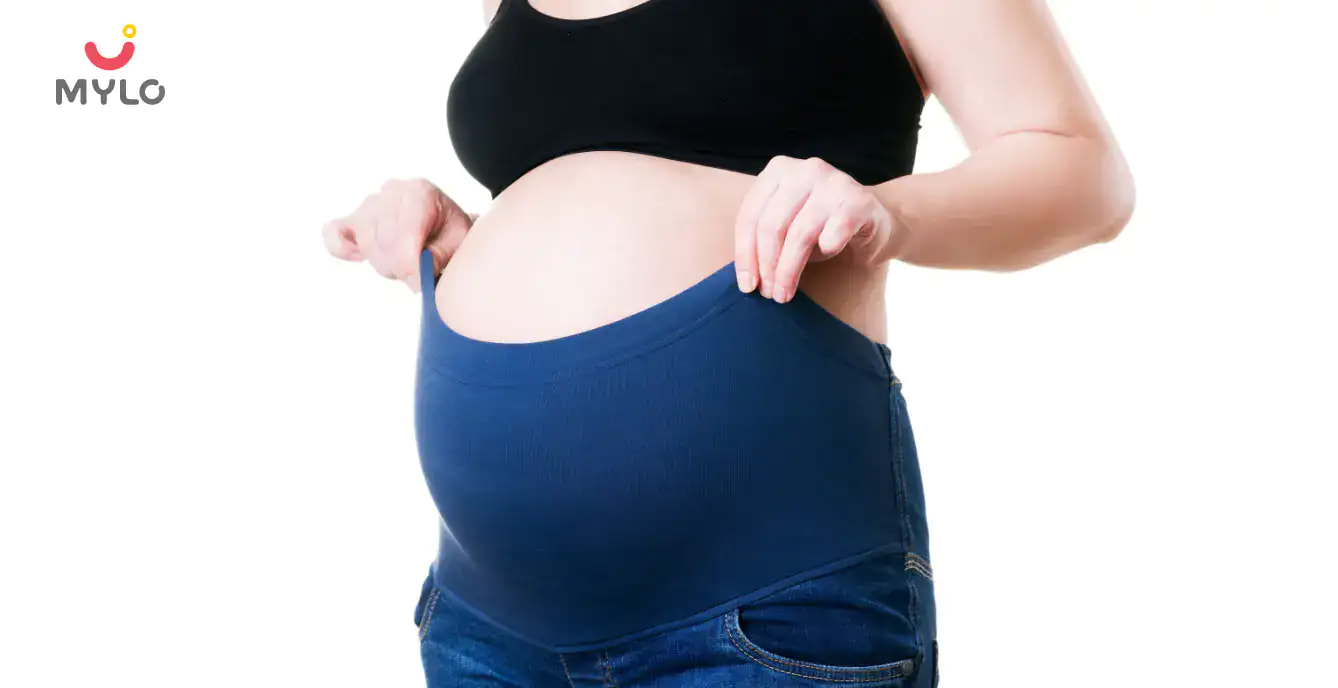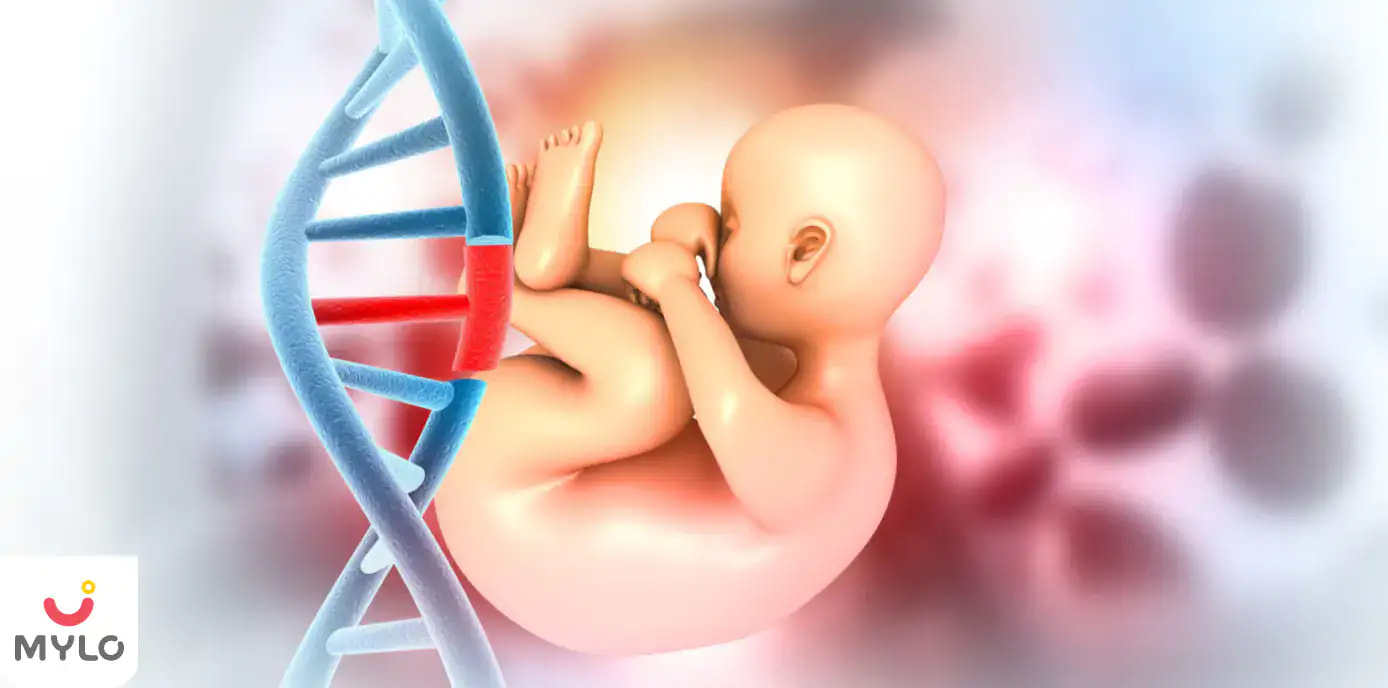Home

Pregnancy Journey

Baby Girl Belly vs Baby Boy Belly: Demystifying The Great Gender Mystery
In this Article

Pregnancy Journey
Baby Girl Belly vs Baby Boy Belly: Demystifying The Great Gender Mystery
Updated on 3 November 2023



Medically Reviewed by
Dr. Madhavi Gupta
Gynecological disorders, Antenatal care ( Garbhini paricharya), Post-natal care, Lactation, Fertility-related problems. - Bachelor of Ayurvedic Medical Science (B.A.M.S)
View Profile

When a woman is pregnant, one of the most common questions people ask is, "Is it a boy or a girl?" While the only accurate way to determine the gender of a baby is through medical tests or ultrasound, many old wives' tales and myths surrounding the shape of a pregnant woman's belly claim to tell apart baby girl belly vs baby boy belly.
In this article, we will explore the differences between belly shape with baby boy vs baby girl, and how to know baby boy or girl based on these indicators.
Baby Boy Belly Bump vs Baby Girl: How to Tell Them Apart?
One of the most popular beliefs is that if a woman's belly is high and round, she's carrying a baby girl, whereas if her belly is low and wide, it's a baby boy. According to this theory, a baby girl belly bump is supposed to sit higher on the abdomen, while a baby boy belly bump will be lower and spread out more.
However, it's important to note that every pregnancy is different, and the shape of a woman's belly can be influenced by various factors such as the position of the baby, the mother's body type, and the number of pregnancies she has had before.
Another supposed indicator of baby boy bump belly vs baby girl is the shape of the belly. Some people believe that a baby girl belly is more pointy and compact, resembling a watermelon, while a baby boy belly is rounder and wider, resembling a basketball. However, there is no scientific evidence to support this claim.
The shape of a pregnant woman's belly is primarily determined by the position of the baby and the mother's body shape, rather than the baby's gender. It's important not to rely solely on the shape of the belly to determine the baby's gender, as it can lead to false assumptions and disappointments.
You may also like: Everything You Need To Know About Carrying Low & Carrying High In Pregnancy
Is There a Relation Between Belly Shape and Baby Gender?
Despite the lack of scientific evidence, the myth that a baby's gender can be determined by the shape of a pregnant woman's belly continues to persist. This belief may stem from the desire to have some control or predictability over the outcome of a pregnancy. However, it's important to remember that the sex of a baby is determined by the chromosomes contributed by both parents at the moment of conception. The shape of a pregnant woman's belly has no influence on the baby's gender.
In reality, the shape and size of a pregnant woman's belly are influenced by a variety of factors, including the position of the baby, the mother's body type, the amount of amniotic fluid, and the strength of the abdominal muscles. The position of the baby can vary throughout the pregnancy, which can result in changes in the shape and size of the belly. Therefore, it's important not to make assumptions about the baby's gender based solely on the shape of the belly.
Common Myths About Belly Shape with Baby Boy vs Baby Girl
Let us uncover some common myths surrounding baby boy belly bump vs baby girl and the truth behind baby gender during pregnancy:
Myth 1: High Belly = Girl, Low Belly = Boy
One of the most common myths is that a high belly indicates a baby girl, while a low belly indicates a baby boy. However, there is no scientific basis for this belief. The position of the baby in the womb can vary throughout the pregnancy, and the shape of the belly is influenced by factors such as the mother's body type and the strength of her abdominal muscles.
Myth 2: Round Belly = Boy, Pointy Belly = Girl
Another popular myth is that a belly shape with baby boy is round, while a pointy belly indicates a baby girl. However, this is purely speculative and has no scientific evidence to support it. The shape of a pregnant woman's belly is primarily determined by the position of the baby and the mother's body shape, rather than the baby's gender.
Myth 3: Wide Belly = Boy, Narrow Belly = Girl
Some people believe that a wide belly is a sign of a baby boy, while a narrow belly indicates a baby girl. However, there is no scientific basis for this claim. The size and shape of a pregnant woman's belly are influenced by a variety of factors, including the position of the baby, the amount of amniotic fluid, and the mother's body type.
Myth 4: Carrying Low = Boy, Carrying High = Girl
Yet another myth suggests that carrying low indicates a baby boy, while carrying high indicates a baby girl. However, the position of the baby in the womb can change throughout the pregnancy, and the height at which a woman carries her baby is not an accurate predictor of the baby's gender.
Myth 5: Belly Shape Determines Baby Gender
Perhaps the most persistent myth of all is that the shape of a pregnant woman's belly can determine the gender of the baby. This myth has no scientific basis and is purely speculative. The shape of a pregnant woman's belly is influenced by a variety of factors, none of which are related to the baby's gender.
You may also like: What Is the Truth About the Size of a Pregnant Belly?
When Can You Determine Baby Girl Belly vs Baby Boy Belly?
If you're eager to find out the gender of your baby, you may be wondering when it's possible to determine whether you're carrying a baby girl or a baby boy. The most accurate way to determine the baby's gender is through medical tests such as amniocentesis or ultrasound. These tests can usually be performed between 16 and 20 weeks of pregnancy.
You may also like: When Do Sex Organs Develop In Your Baby In The Womb?
However, gender testing and disclosing are illegal in India and the only way for a pregnant couple to know the gender of their baby is after the baby's birth.
The Bottomline
There are many myths and old wives' tales surrounding the shape of a pregnant woman's belly and its relation to the baby's gender. But it's important to note the only accurate way to determine the baby's gender is through medical tests or ultrasound. Instead of trying to predict the baby's gender based on baby girl belly vs baby boy belly, it's more important to embrace the surprise and joy of not knowing. Whether you're having a baby boy or girl, the most important thing is that your baby is healthy. Enjoy the journey of pregnancy and look forward to the wonderful adventure of parenthood, regardless of the gender of your baby.
References
1. Perry DF, DiPietro J, Costigan K. (1999). Are women carrying "basketballs" really having boys? Testing pregnancy folklore. Birth.
2. Mathews F, Johnson PJ, Neil A. (2008). You are what your mother eats: evidence for maternal preconception diet influencing foetal sex in humans. Proc Biol Sci.
Tags
Baby Girl Belly vs Baby Boy Belly in Hindi, Baby Girl Belly vs Baby Boy Belly in Telugu, Baby Girl Belly vs Baby Boy Belly in Tamil, Baby Girl Belly Vs Baby Boy Belly in Bengali





Medically Reviewed by
Dr. Madhavi Gupta
Gynecological disorders, Antenatal care ( Garbhini paricharya), Post-natal care, Lactation, Fertility-related problems. - Bachelor of Ayurvedic Medical Science (B.A.M.S)
View Profile


Written by
Ishmeet Kaur
Ishmeet is an experienced content writer with a demonstrated history of working in the internet industry. She is skilled in Editing, Public Speaking, Blogging, Creative Writing, and Social Media.
Read MoreGet baby's diet chart, and growth tips

Related Articles
Related Topics
RECENTLY PUBLISHED ARTICLES
our most recent articles

Diet & Nutrition
গর্ভাবস্থায় আলুবোখরা: উপকারিতা ও ঝুঁকি | Prunes During Pregnancy: Benefits & Risks in Bengali

Diet & Nutrition
গর্ভাবস্থায় হিং | ঝুঁকি, সুবিধা এবং অন্যান্য চিকিৎসা | Hing During Pregnancy | Risks, Benefits & Other Treatments in Bengali

Women Specific Issues
স্তনের উপর সাদা দাগ: লক্ষণ, কারণ এবং চিকিৎসা | White Spots on Nipple: Causes, Symptoms, and Treatments in Bengali

Diet & Nutrition
গর্ভাবস্থায় পোহা: উপকারিতা, ধরণ এবং রেসিপি | Poha During Pregnancy: Benefits, Types & Recipes in Bengali

Diet & Nutrition
গর্ভাবস্থায় মাছ: উপকারিতা এবং ঝুঁকি | Fish In Pregnancy: Benefits and Risks in Bengali

Diet & Nutrition
গর্ভাবস্থায় রেড ওয়াইন: পার্শ্ব প্রতিক্রিয়া এবং নির্দেশিকা | Red Wine During Pregnancy: Side Effects & Guidelines in Bengali
- ইনার থাই চ্যাফিং: কারণ, উপসর্গ এবং চিকিৎসা | Inner Thigh Chafing: Causes, Symptoms & Treatment in Bengali
- গর্ভাবস্থায় ব্রাউন রাইস: উপকারিতা ও সতর্কতা | Brown Rice During Pregnancy: Benefits & Precautions in Bengali
- Velamentous Cord Insertion - Precautions, Results & Safety
- Unlock the Secret to Flawless Skin: 7 Must-Have Qualities in a Face Serum
- Unlock the Secret to Radiant Skin: How Vitamin C Serum Can Transform Your Complexion
- Gender No Bar: 10 Reasons Why Everyone Needs a Body Lotion
- Unlock the Secret to Radiant Skin How to Choose the Perfect Body Lotion for Your Skin Type
- Top 10 Reasons to Apply a Body Lotion After Every Bath
- Communication in Toddlers: Milestones & Activities
- How to Improve Vocabulary for Toddlers?
- A Comprehensive Guide to Understanding Placenta Accreta
- Vulvovaginitis in Toddlers Causes, Symptoms and Treatment
- A Comprehensive Guide to Understanding Cerebral Palsy in Children
- Bitter Taste in Mouth During Pregnancy: Understanding the Causes and Remedies


AWARDS AND RECOGNITION

Mylo wins Forbes D2C Disruptor award

Mylo wins The Economic Times Promising Brands 2022
AS SEEN IN
















- Mylo Care: Effective and science-backed personal care and wellness solutions for a joyful you.
- Mylo Baby: Science-backed, gentle and effective personal care & hygiene range for your little one.
- Mylo Community: Trusted and empathetic community of 10mn+ parents and experts.
Product Categories
baby carrier | baby soap | baby wipes | stretch marks cream | baby cream | baby shampoo | baby massage oil | baby hair oil | stretch marks oil | baby body wash | baby powder | baby lotion | diaper rash cream | newborn diapers | teether | baby kajal | baby diapers | cloth diapers |








